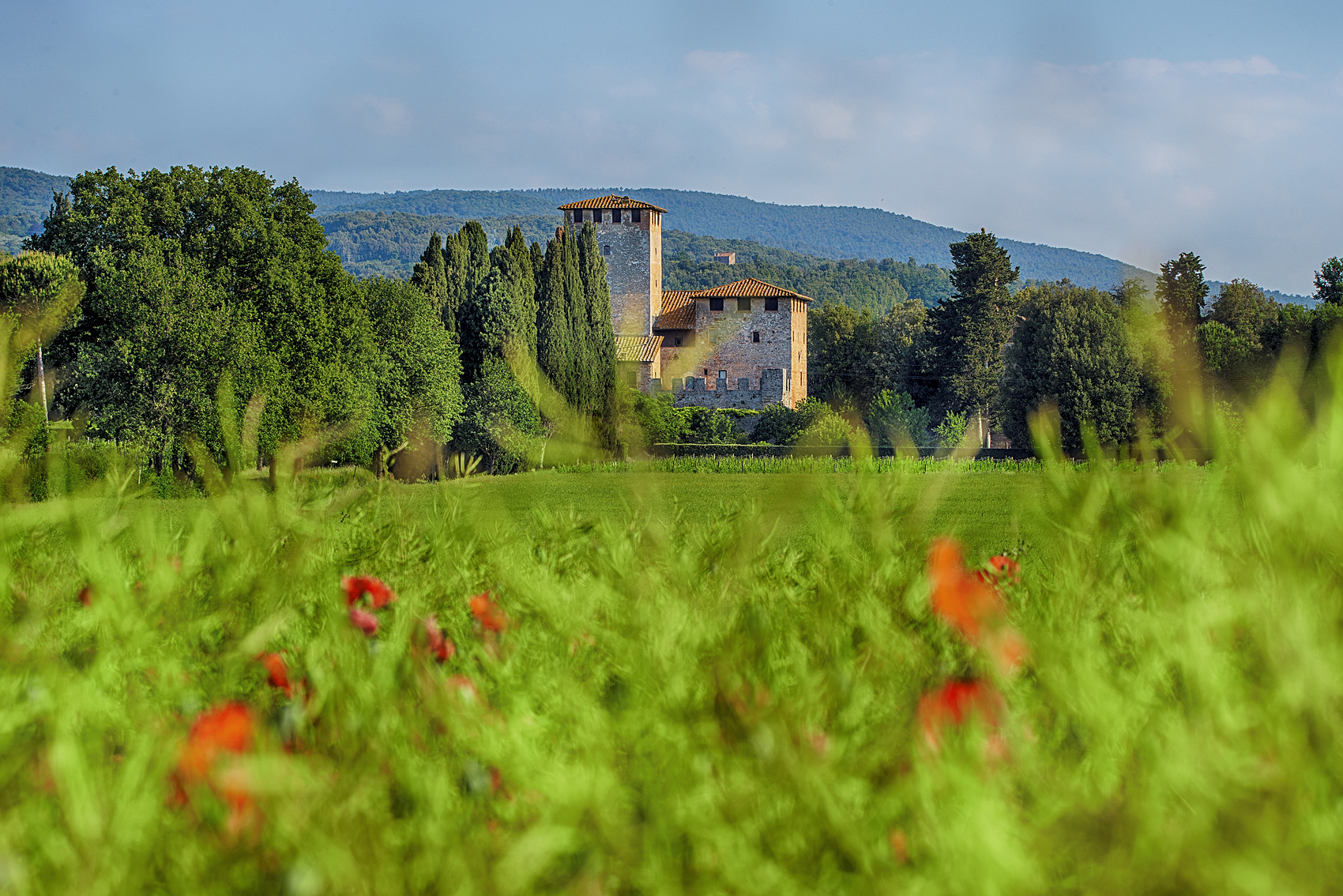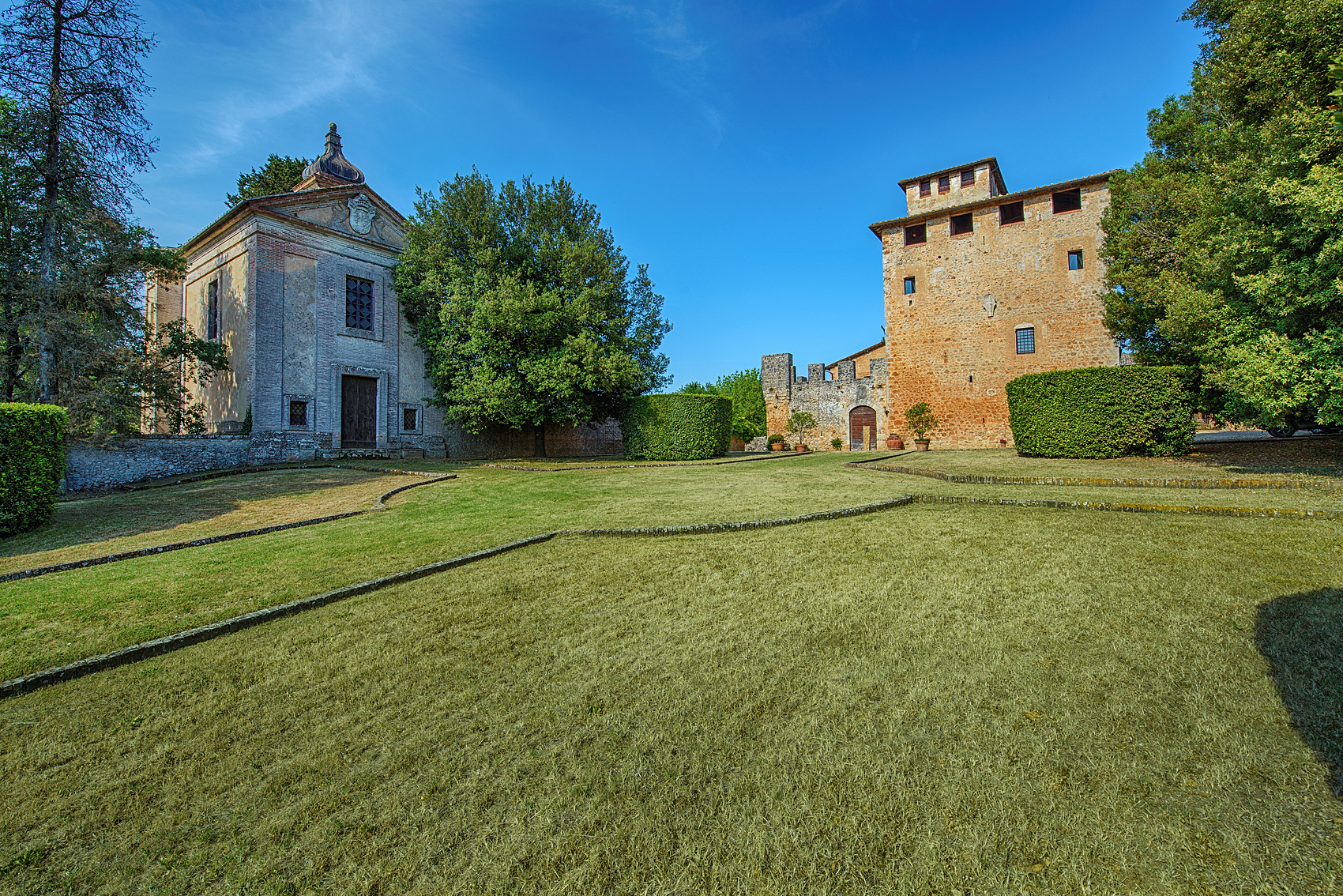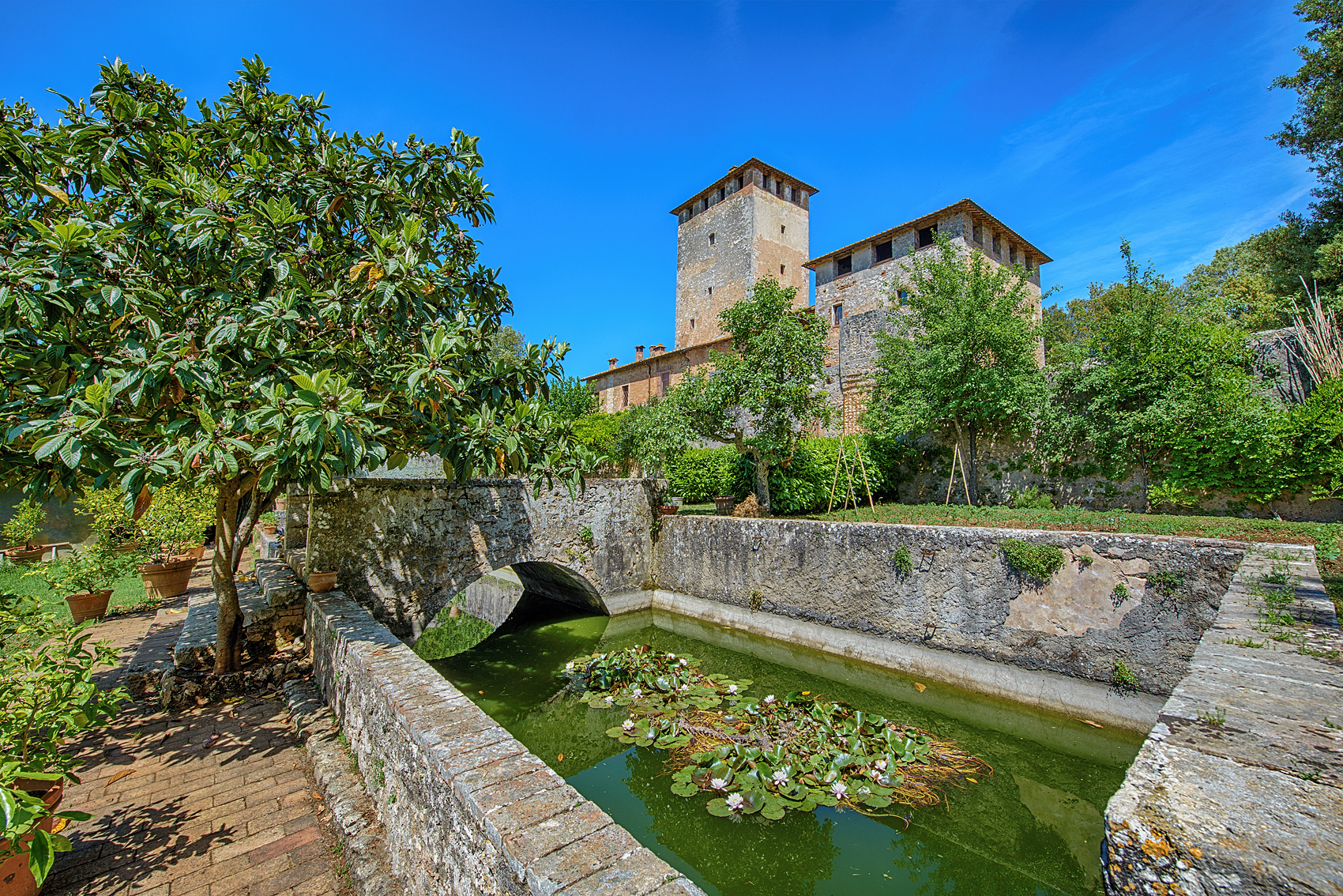The History of the Estate of Poggiarello
 The architectural structure of the castellated tower of the tallest building of Poggiarello gives rise to the hypothesis that its construction was in the early Medieval era during the second half of the XIII century (1250 ca.), as is confirmed by a land registry assessment in 1387 by the “contrado”, (the surrounding rural area of Sovicille (Suavis Locus Ille), containing a report of the existence of a “terram vineatam et sode cum casalino positam al Poggiarello” and therefore not only a rural settlement but also an agricultural environment with vineyards as the early evidence of a natural interest in winemaking in this place.
This fortress was originally built to defend the surrounding lands and the storage of their harvests and subsequently modified to become a noble residence, that even today with its stronghold, dominates the rural countryside to the south-west of Siena and the slopes of the Montagnola region of Siena, in one of the most evocative and unspoiled corners of the Tuscan countryside.
At the beginning of the 1500s the Estate of the Castle of Poggiarello became a part of the property of the family Chigi Saracini, one of the most powerful and wealthiest families of that era and it was under them that it was transformed from a medieval castle, hitherto used for military defense, into a Stately home culminating in the building of a Renaissance Chapel, at a later date dedicated, in 1678, to the Prince Agostino Chigi, and was considered to be the work of the Architect Baldassarre Peruzzi, well known for the creation of Villa Farnesina in Rome.
The architectural structure of the castellated tower of the tallest building of Poggiarello gives rise to the hypothesis that its construction was in the early Medieval era during the second half of the XIII century (1250 ca.), as is confirmed by a land registry assessment in 1387 by the “contrado”, (the surrounding rural area of Sovicille (Suavis Locus Ille), containing a report of the existence of a “terram vineatam et sode cum casalino positam al Poggiarello” and therefore not only a rural settlement but also an agricultural environment with vineyards as the early evidence of a natural interest in winemaking in this place.
This fortress was originally built to defend the surrounding lands and the storage of their harvests and subsequently modified to become a noble residence, that even today with its stronghold, dominates the rural countryside to the south-west of Siena and the slopes of the Montagnola region of Siena, in one of the most evocative and unspoiled corners of the Tuscan countryside.
At the beginning of the 1500s the Estate of the Castle of Poggiarello became a part of the property of the family Chigi Saracini, one of the most powerful and wealthiest families of that era and it was under them that it was transformed from a medieval castle, hitherto used for military defense, into a Stately home culminating in the building of a Renaissance Chapel, at a later date dedicated, in 1678, to the Prince Agostino Chigi, and was considered to be the work of the Architect Baldassarre Peruzzi, well known for the creation of Villa Farnesina in Rome.

A further structure is attributed to this period made of of agricultural buildings subdivided into small farms, referred to in the testamentary disposition of assets of Prince Agostino as quote “… the Villa of Poggiarello with its palace and tower built entirely in stone and fortified in keeping with the style of this period, but with creature comforts, befitting the home of the owner, such as storerooms for conserving any sort of produce or possessions, a courtyard, a square, hen-coop, chapel, and other outside areas, as well as areas of fallow land surrounding the aforementioned small farms, dams and property, in part currently worked under feudal law and in part dedicated to the cultivation of the owner’s vineyards, some dedicated vineyards and some narrow strips of densely planted vines called “anguillacci” (17th century word commonly used in both Italian and Spanish for this area of vines} with other areas dedicated to olive groves and plantings of many types of trees…” In successive decades and throughout the Renaissance period, the descendants, leaving intact the fortified architecture of the complex, defined by its perimetral stone walls, further enriched the whole area with a formal Italian style garden and a vegetable garden with its peach grove, still visible today and maintained in its original form, thanks to a constant project of restoration that has permitted the insertion of the Castle of Poggiarello in the register of historic homes. (ADSI-FAI).

